Liquid wallpaper: properties and application
Until recently, liquid wallpaper was far from being the most popular in the market of building materials, and ordinary roll wallpaper was preferred to them. Now they began to be used more and more often, which is explained by their merits and original appearance. It is worth mentioning right away that liquid wallpaper only with a stretch can be called wallpaper, since by the method of application they gravitate more to plasters.
The composition of liquid wallpaper may include substances such as cellulose fibers, silk, cotton, as well as adhesives, possibly fungicides of natural origin, and, of course, decorative components that set the color of the finished surface, and maybe its luster, mother of pearl and etc.
Advantages and disadvantages of liquid wallpaper
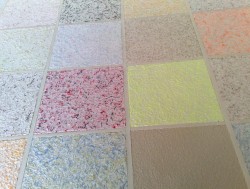 The increasing popularity of liquid wallpaper is due to their advantages over conventional ones. So, The main advantages can be considered:
The increasing popularity of liquid wallpaper is due to their advantages over conventional ones. So, The main advantages can be considered:
- in order to be able to apply liquid wallpaper on the wall, you do not need a lot of space, because they do not need to be cut, as usual, you do not need to use glue, which must drip onto the floor. Yes, and you can apply such a composition in parts, without fear of the formation of highly noticeable joints;
- not even a professional can cope with applying liquid wallpaper, but some rolled wallpapers require knowledge of the nuances of application, therefore, self-sticking can cause defects that will need to be fixed later;
- liquid wallpaper is not as demanding on the surface as some other types of finishing materials. Therefore, they are an indispensable option if there are small defects in the form of cracks on the walls. By the way, if the house has just been built, and it can still shrink, then liquid wallpaper is ideal in this case too;
 liquid wallpaper can solve a lot of problems with the microclimate of the room, as their surface passes air, unlike, for example, vinyl wallpaper, so they will remove excess moisture from the room, or vice versa, let it pass from the outside;
liquid wallpaper can solve a lot of problems with the microclimate of the room, as their surface passes air, unlike, for example, vinyl wallpaper, so they will remove excess moisture from the room, or vice versa, let it pass from the outside;- these wallpapers do not contain non-natural materials, which means that they will not cause allergies and other negative consequences of use, so they can even be used to decorate children's rooms;
- liquid wallpapers are characterized by good indicators of sound and heat insulation, frost resistance, do not accumulate electricity and, accordingly, dust. They are not combustible and do not fade in the sun, are durable;
- one cannot fail to mention the huge potential of liquid wallpaper in the formation of an unusual wall decoration, because different colors can be combined as you like, getting patterns or whole pictures. Paper or vinyl wallpapers will not be able to boast of such opportunities.
According to all these descriptions, it may seem that liquid wallpaper is an ideal material that does not have any disadvantagesbut this is not so:
 price - although every year this material becomes more accessible, still it still remains more expensive than roll wallpaper. And it is precisely this factor that often leads buyers to purchase more traditional materials;
price - although every year this material becomes more accessible, still it still remains more expensive than roll wallpaper. And it is precisely this factor that often leads buyers to purchase more traditional materials;- not so long ago, it could be considered a drawback and not so huge assortment of colors of liquid wallpaper, but due to the fact that several colors can be combined on one wall, and manufacturers come up with more and more new ways to variety of wallpapers, this minus will eventually come to naught;
- even though they say liquid wallpaper that they are moisture resistant, nevertheless contact with water is best minimized, or coat the surface with a protective varnish. However, if a section has lost its appearance due to water entering it, it is easy to repair it by cutting and applying a new layer of wallpaper. So the flaws of these wallpapers can be converted into pluses.
Technology for applying liquid wallpaper
Tools and materials
In order to cope with the application of liquid wallpaper, you need a small set of tools and materials.
Materials:
 liquid wallpaper itself in the required quantity and color;
liquid wallpaper itself in the required quantity and color;- putty, which is needed to close up large cracks, if they are, of course, available;
- primer to strengthen the surface and reduce moisture absorption. You can use Alpina from Caparol;
- primer with quartz dust if the surface is too smooth (concrete or polished wood);
- oil or latex paint, if the surface contains metal elements;
- optional acrylic lacquer - it is useful for protecting the finished surface in the kitchen or bathroom.
Instruments:
- deep containers for preparing liquid wallpaper with a volume of at least 7-8 liters per package;
- plexiglass or stainless steel spatula with a smooth surface for applying liquid wallpaper;
- a spatula can be replaced with a trowel or a gun for applying liquid wallpaper;
- paint roller or brush for applying a primer;
- wide and narrow spatula for puttying the walls, as well as a mixer for preparing the putty itself;
- a pencil to put a picture on the wall, if you plan to make a whole pattern or picture from liquid wallpaper.
Surface preparation
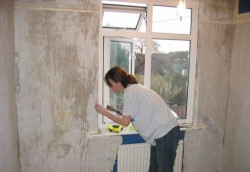 If the advantages of liquid wallpaper, in your opinion, outweigh the disadvantages, and you decide to decorate your room in such ways, then it is worth considering some nuances. So, even though such wallpapers can hide some defects, but not all, therefore, the remains of old paint, metal elements protruding from the walls and other irregularities are not possible to hide liquid wallpapers, therefore, before applying them, it will be necessary to properly prepare the surface.
If the advantages of liquid wallpaper, in your opinion, outweigh the disadvantages, and you decide to decorate your room in such ways, then it is worth considering some nuances. So, even though such wallpapers can hide some defects, but not all, therefore, the remains of old paint, metal elements protruding from the walls and other irregularities are not possible to hide liquid wallpapers, therefore, before applying them, it will be necessary to properly prepare the surface.
Before you apply liquid wallpaper on the wall, check it for compliance with certain conditions. So, it must be strong, i.e. do not have any layers that may subsequently fall off, for example, old paint or plaster. It should not pass any color through the layer of wallpaper, therefore, metal elements are either disposed of completely or coated with special compounds so that they do not corrode. The surface should not absorb moisture, so its priming will not hurt.
The surface before applying liquid wallpaper must be rid of traces of previous coverage: old wallpaper, paint, plaster, so that after a while all this does not fall off along with a fresh layer of decoration. If there are large cracks on the wall, then it is advisable to putty them: this can also be done when applied by the liquid wallpaper itself, but then the consumption of not the cheapest material will increase, so it is better to use ordinary putty. Some experts recommend filling not only cracks and, for example, the joints between the sheets of drywall, but the entire surface.
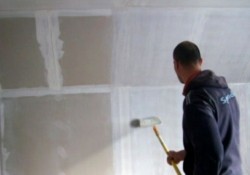 To add strength to the surface of the wall, it is better primer: In this way, moisture penetration is also prevented. Better to use deep penetration primer and apply in 2-3 layers, while the popular Ceresit CT17 primer is not very suitable, since over time it can manifest itself in the form of yellow spots on the wallpaper. The primer must be either colorless or white.
To add strength to the surface of the wall, it is better primer: In this way, moisture penetration is also prevented. Better to use deep penetration primer and apply in 2-3 layers, while the popular Ceresit CT17 primer is not very suitable, since over time it can manifest itself in the form of yellow spots on the wallpaper. The primer must be either colorless or white.
If there is a surface metal elements, such as nails, corners or fittings, they can also form yellowish-rust spots over time, so it is better to cover them with oil or latex paint to limit the contacts and the reaction of the metal with water. After priming, it is better to apply another layer of putty.
It is worth noting that liquid wallpaper is best placed on a slightly rough surface, so they can be applied immediately to putty or unpolished plaster, but if the base is a smooth tree or concrete, it is best to apply a primer with silica dust. Such a primer can be made independently by adding sand to a fine, sifted through a sieve for flour ordinary. As a result, the liquid wallpaper will be applied evenly and not reach for the spatula, as it could be if the surface is perfectly smooth.
Cooking liquid wallpaper
In principle, the process of preparing the composition of liquid wallpaper will be indicated in the instructions for each package with the contents, but it is still useful to indicate some nuances in order to accurately calculate the time.
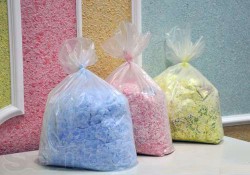 So, you need to start preparing liquid wallpapers in advance, approximately 6-12 hours before application, therefore, you can start at the stage of priming the surface. So, the composition of liquid wallpaper includes a base of cellulose or silk, dye and glue - all this can already be mixed, or sold in separate packages. In the second case, it will be necessary to mix everything thoroughly in a large container: moreover, it is necessary to mix, not crumpling, but as if fluffing. If all kinds of dyes and sparkles are not included in the finished mixture, then it is better to mix them first with water, and then add the base there: this will help to evenly distribute both color and sparkles over the entire surface. Those wallpapers, which are purchased already mixed, can also be fluffed up so that there are no lumps - this is not necessary, but partly the guarantee that they will be applied more evenly.
So, you need to start preparing liquid wallpapers in advance, approximately 6-12 hours before application, therefore, you can start at the stage of priming the surface. So, the composition of liquid wallpaper includes a base of cellulose or silk, dye and glue - all this can already be mixed, or sold in separate packages. In the second case, it will be necessary to mix everything thoroughly in a large container: moreover, it is necessary to mix, not crumpling, but as if fluffing. If all kinds of dyes and sparkles are not included in the finished mixture, then it is better to mix them first with water, and then add the base there: this will help to evenly distribute both color and sparkles over the entire surface. Those wallpapers, which are purchased already mixed, can also be fluffed up so that there are no lumps - this is not necessary, but partly the guarantee that they will be applied more evenly.
Features of the preparation of your particular wallpaper can be found in the instructions, for example, amount of waterto be added. It is worth noting only some points: for example, it is better to pour the right amount of water into the prepared container, and only then pour the mixture, although the reverse order is not excluded. In this case, it is better to prepare the mixture specifically from one package in one container: the combination of several packages or vice versa, using only part of it is not allowed if you want to get a uniform layer with the same color. Therefore, they prepare mixtures in different containers, combining them already ready-made.
You can mix the mixture with water simply by hand - there is nothing harmful and corrosive there. Although the instructions for some wallpapers indicate a tool such as drill using a nozzle mixer, but in some cases this method can simply break long fibers, and as a result the appearance will turn out to be a little different than it should be.
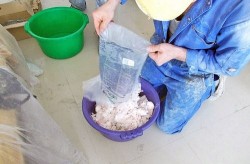 When the mixture is ready, leave it insist on 6-12 hours - depending on the requirements of the manufacturer. This is necessary so that the glue is completely softened and well binds the remaining components of the mixture. After that, you can mix all the prepared wallpapers in one container: you need to calculate so that this amount is enough for either the entire room, or at least one wall. Wallpaper from different mixes can have slightly different shades, and the transition on one wall can be slightly noticeable, but if it is applied to different walls in the room, it will be almost impossible to detect a different shade.
When the mixture is ready, leave it insist on 6-12 hours - depending on the requirements of the manufacturer. This is necessary so that the glue is completely softened and well binds the remaining components of the mixture. After that, you can mix all the prepared wallpapers in one container: you need to calculate so that this amount is enough for either the entire room, or at least one wall. Wallpaper from different mixes can have slightly different shades, and the transition on one wall can be slightly noticeable, but if it is applied to different walls in the room, it will be almost impossible to detect a different shade.
Separately noteworthy liquid wallpaper consumption. Usually, manufacturers indicate that one kilogram of the mixture is enough for 5-6 m², but in fact, it is better to calculate from the consumption of 1 kg of mixture for 3-4 m². A ready-made wallpaper solution can stand for a long time without losing its properties, but still it is not worth delaying with application to the walls.
Application of liquid wallpaper
In order to apply the prepared liquid wallpaper, you can use one of the following instruments: trowel, putty knife, spray gun or grater. Moreover, graters can be used both ordinary and special for liquid wallpaper. The latter are often made of transparent plastic, making it easy to control the process of applying the material, especially when applications are made.
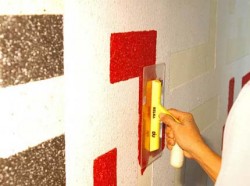 Himself the application process is quite simple: very reminiscent of puttying, only a little lighter. You can pick up a portion of the mixture either with your hands or with a spatula, and apply it to the wall or the tool that is used. Then the wallpaper is rubbed on the wall with an even layer of 2-3 mm - the thickness may vary depending on the manufacturer. They begin to apply the wallpaper as a separate island, and the following portions are added to it. Such a problem may arise that the solution does not stick well to the wall or is too thick. In this case, a small portion of water can solve the problem.
Himself the application process is quite simple: very reminiscent of puttying, only a little lighter. You can pick up a portion of the mixture either with your hands or with a spatula, and apply it to the wall or the tool that is used. Then the wallpaper is rubbed on the wall with an even layer of 2-3 mm - the thickness may vary depending on the manufacturer. They begin to apply the wallpaper as a separate island, and the following portions are added to it. Such a problem may arise that the solution does not stick well to the wall or is too thick. In this case, a small portion of water can solve the problem.
It is better to hold the grater with which the wallpaper is applied at an angle of 5-15 degrees, and it is better to choose different direction of movement to achieve a spectacular appearance, including a little twisting. When approximately 1 m2 of the coating is applied, it is possible to smooth it a little with the same grater, only soaked in water.
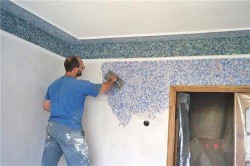 If you want to get a more embossed surface, you can use a gun: it is filled with the required amount and evenly applied to the surface.
If you want to get a more embossed surface, you can use a gun: it is filled with the required amount and evenly applied to the surface.
Necessary conditions for applying liquid wallpaper: temperature not lower than 10ºС and well-ventilated room.
In order for such wallpapers to completely dry, they usually need 1-3 days. Then, if desired, they can be varnished for additional protection against negative environmental factors. Varnish is usually covered with liquid wallpaper in a bathtub or kitchen, while it is worth using only vapor-permeable varnish, although for these rooms it is better to immediately choose a moisture-proof liquid wallpaper.
Liquid Wallpaper Care
When used properly, liquid wallpaper may serve at least 10 years. So, in order to keep them clean, just walk with a vacuum cleaner. If you varnished the wallpaper, then you can use a slightly damp sponge.
If at some point visible defect formed, then the wallpaper can be soaked with water and carefully removed with a spatula, then primed the wall 2-3 times and apply liquid wallpaper again. Therefore, it is always worth buying the initial mixture with a margin. And if after applying the main layer there are unused wallpapers, then they do not need to be thrown away - in the wet state they can be stored for about two weeks, and at this time, after drying of the main layer, correction may be necessary. Otherwise, the residues can be decomposed, dried, and then only add water, so that the mixture is ready for re-application.

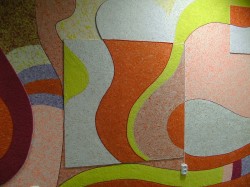
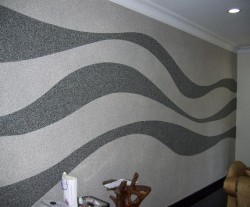

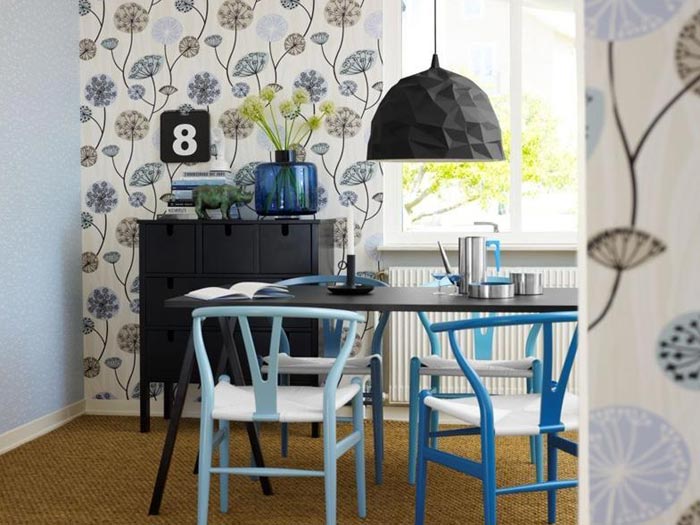
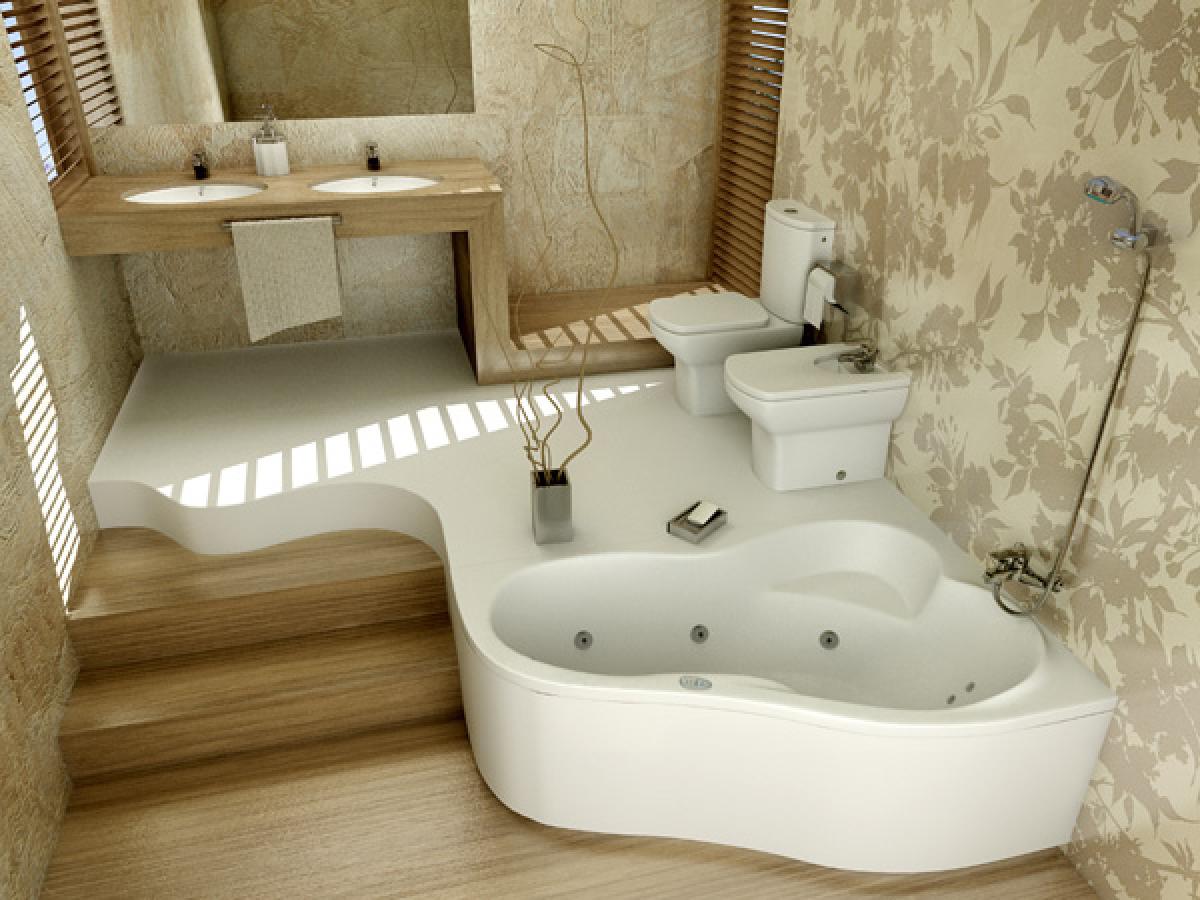



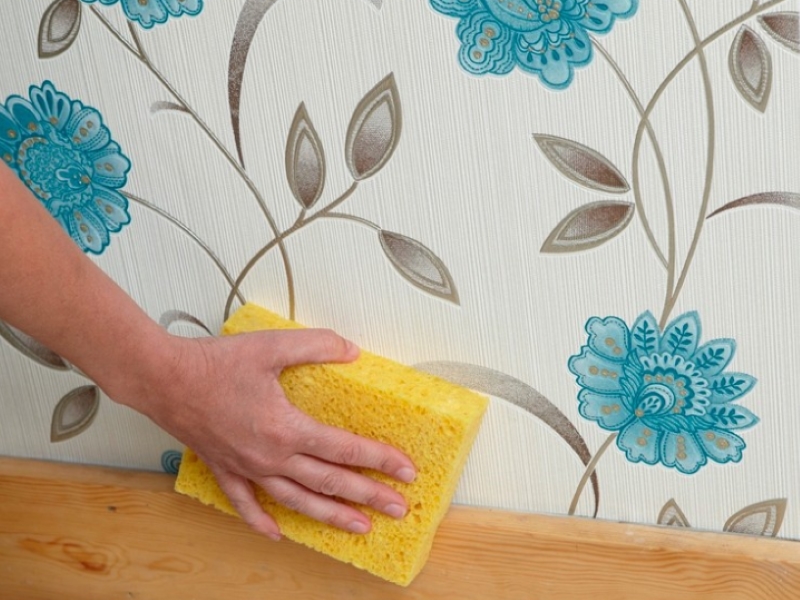

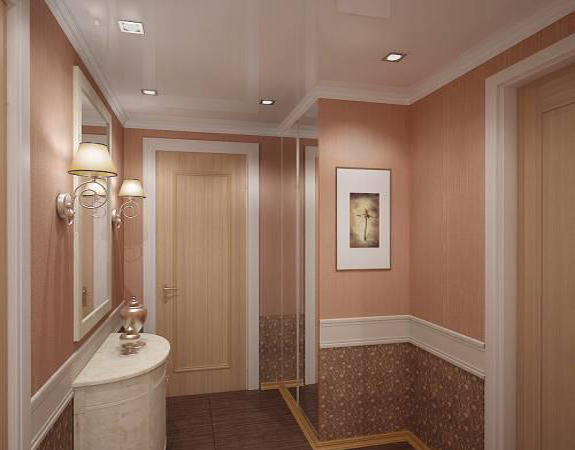
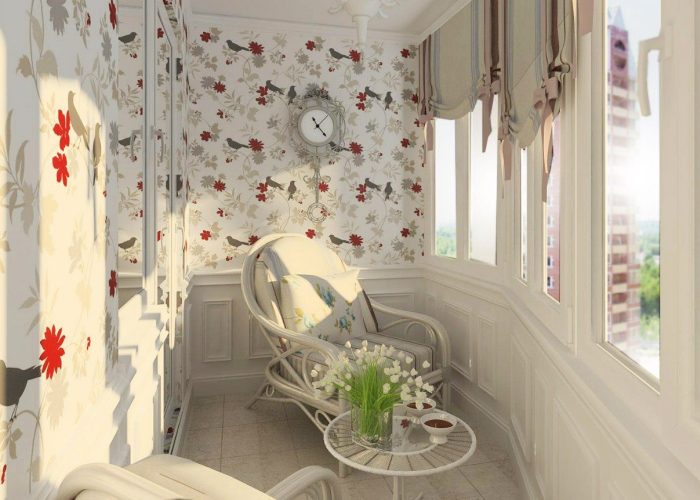

only it’s not clear to me as well, but how about this material with vapor permeability, will the walls breathe? or as is the case with vinyl ???
Too big article. It's hard to read. Better a lot of small articles.
But I, as a master of liquid wallpaper, was extremely interested. thanks